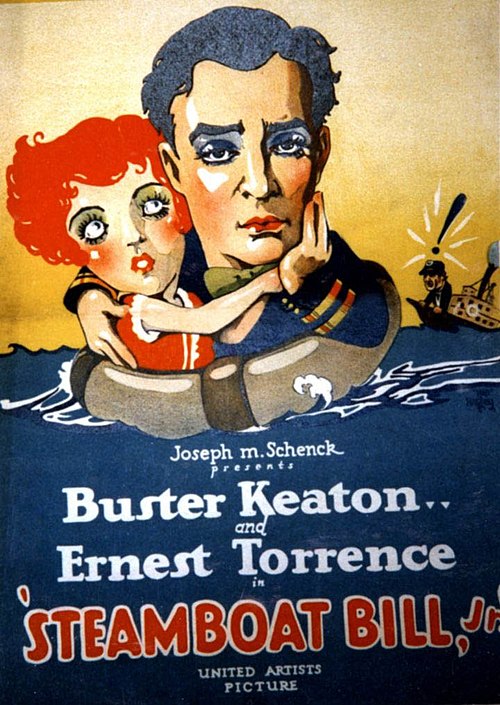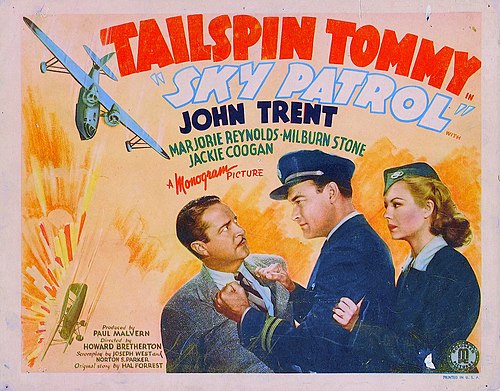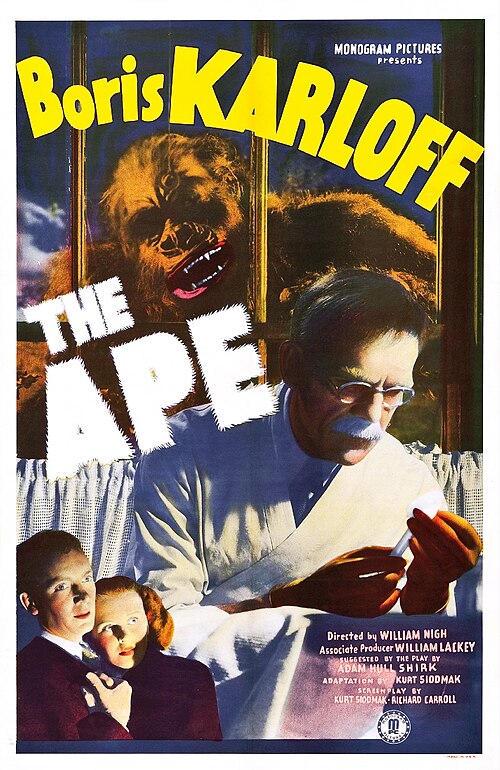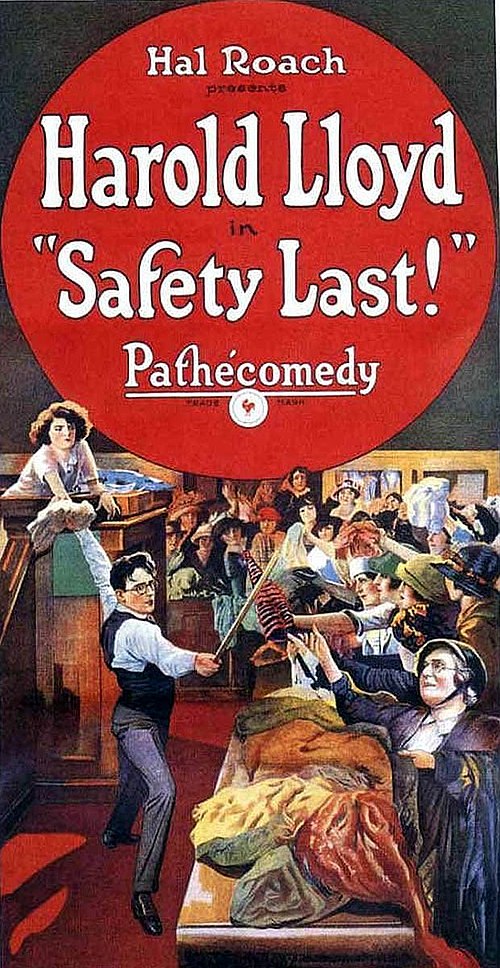Advertisement

Image source: Wikimedia Foundation (wikimedia.org)
Download Movie [Video Format: MP4]
Movie Source: Internet Archive (archive.org)
Advertisement
Advertisement
The Sheik
1921
Legendary Valentino picture. Valentino stars as an Arabian who falls in love with an English woman in this classic silent picture. Visit the IMDB page here.
| starring = Rudolph Valentino<br>Agnes Ayres<br>Adolphe Menjou
| music = Irving Berlin (1970s reissue)
| cinematography = William Marshall (cinematographer)
| studio = Famous Players-Lasky
| distributor = Paramount Pictures
| released =
| runtime = 80 mins.
| country = United States
| language = Silent<br>English intertitles
| budget = under $200,000
| gross = $1.5 million (US/Canada)
}}
File:The Sheik (1921).webm
The Sheik is a 1921 American silent film romantic drama film produced by Famous Players-Lasky, directed by George Melford and starring Rudolph Valentino, Agnes Ayres, and Adolphe Menjou. It was based on the bestselling romance novel The Sheik (novel) by Edith Maude Hull and was adapted for the screen by Monte M. Katterjohn. The film was box office hit and helped propel Valentino to stardom.< name="holmes"></>
In the sequel, Son of the Sheik, Valentino played both the Sheik and his son, while Ayres reprised her role.
Plot
Image:Valentino Ayres.jpgIn the North African town of Biskra, headstrong Lady Diana Mayo (Ayres) uses a marriage proposal because she believes it would be the end of her independence. Against her brother's wishes, she is planning a month-long trip into the desert escorted only by natives.
When Diana goes to the local casino, she is informed it has been appropriated for the evening by an important Sheikh, and that none but Arab people may enter. Annoyed at being told what she cannot do, and her curiosity piqued, Diana borrows an Arab dancer's costume and sneaks in. Inside, she finds men gambling for new wives. When she is selected to be the next prize, she resists. Sheik Ahmed Ben Hassan (Valentino) intervenes, then realizes she is white. Amused, he sends her away. Afterward, Mustapha Ali (Charles Brinley) informs the Sheik she is the woman he has been hired to guide tomorrow. The Sheik hatches a plan. Early the next morning, he sneaks into her room and tampers with the bullets in her revolver as she is sleeping.
File:The Sheik - Rudolph Valentino and Agnes Ayres.jpg
As her brother leaves her to her desert excursion, she assures him he will see her in London next month. The Sheik and his men come upon Diana riding alone. She tries to flee while shooting at the Sheik, but he easily captures her. Back at his encampment, he orders her about. She is unused to such treatment, but the Sheik tells her she will learn and demands she dress like a woman (she is wearing pants) for dinner.
Diana tries again to escape, this time into a raging sand storm. The Sheik saves her from certain death, and tells her she will learn to love him. Later, he finds Diana alone in her quarters weeping. The Sheik considers forcing himself upon her, but decides against it and calls for a serving girl. The serving girl (called Zilah in the book and film) heads over to where Diana is, and offers her a hug. Diana accepts, and pours out her tears in Zilah's arms.
After a week, the Sheik is delighted by the news that his close friend from his days in Paris (where he was educated) is coming for a visit. Diana is dismayed at the thought of being seen in Arab dress by a Westerner, but the Sheik does not understand her shame. When she is introduced to writer and doctor Raoul St. Hubert (Menjou), Diana's spirit is nearly broken. He befriends her and reprimands the Sheik for his callous treatment of her. The Sheik returns her Western clothing, though he uses to release her.
When Raoul is called away to tend to an injured man, Diana shows concern that it might be the Sheik. Seeing this from hiding, the Sheik is elated that she may be warming up to him at last. He gives Diana her gun back, telling her he trusts her.
Diana is allowed to go into the desert under the watchful eye of the Sheik's French valet Gaston (Lucien Littlefield). She escapes. Making her way across the sands, she spots a caravan, unaware that it belongs to the bandit Omair (Walter Long (actor)). Fortunately, the Sheik and his men reach her first.
The Sheik reveals to Raoul he is in love with Diana; his friend convinces him to let her go. Meanwhile, Diana is allowed out once more. She playfully writes "I love you Ahmed" in the sand. Then Omair's band captures her, killing her guards and leaving the wounded Gaston for dead.
When the Sheik goes looking for Diana, he sees her message, then learns from Gaston who has abducted her. He gathers his men to attack Omair's stronghold. Omair tries to force himself on Diana, but is almost stabbed by one of his women. Then the Sheik and his men sweep in. After a long fight, the Sheik kills Omair, but is himself gravely injured.
Raoul tends to him and tells Diana he has a chance. She sits and holds the Sheik's hand. When she remarks that his hand is big for an Arab, Raoul reveals that the Sheik is not one. His father was British and his mother Spanish. They died in the desert, and their child was rescued and raised by the old Sheik; when the old man died, Ahmed returned to rule the tribe. When Ahmed wakes up, Diana confesses her love.
Cast
- Rudolph Valentino as Sheik Ahmed Ben Hassan
- Agnes Ayres as Lady Diana Mayo
- Ruth Miller as Zilah, the serving girl
- George Waggner as Yousaef, a tribal chieftain
- Frank Butler (writer) as Sir Aubrey Mayo, Diana's brother
- Charles Brinley as Mustapha Ali
- Lucien Littlefield as Gaston
- Adolphe Menjou as Raoul de Saint Hubert
- Walter Long (actor) as Omair
- Loretta Young as Arab child (uncredited)
- Polly Ann Young (uncredited)
Production
The film was based on Edith Maude Hull's best selling novel The Sheik. The novel became a best seller in part because of its controversial dealings with racial miscegenation and rape. Due to the controversial subject matter, certain aspects of the novel were left out of the film. In the novel, Sheik Ahmed rapes Lady Diana but in the film, rape is only suggested as a curtain closes on Sheik Ahmed and Lady Diana before there is any physical contact between the two.< name="holmes" />< name=abel></>There appears to be some dispute as to where the film was shot. Emily W. Leider, author of Dark Lover: The Life and Death of Rudolph Valentino, argues that the desert exterior scenes were filmed in Oxnard, California, and the Guadalupe Dunes of Santa Barbara County.<></> However, one 1983 newspaper article featured in the Suffolk County News contends that exteriors scenes were shot at the "Walking Dunes" in Montauk, New York and at the Kaufman Astoria Studios. Author Richard Koszarski claims that this is incorrect and cites it as an "urban legend".<></><></> Another source says filming was done in the desert near Palm Springs, California.< name=Niemann><!-- --> (here for Table of Contents)</>
Reception
The Sheik premiered in Los Angeles on October 21, 1921. Critical reception was mixed as some critics felt that it was mistake to leave out the rape of Lady Diana by Sheik Ahmed as it altered the original message of the novel. The Sheik helped to solidify Valentino's image as one of the first male sex symbols of the screen and made him an international star. While he was a popular draw with female audiences, some male audiences mocked his onscreen persona and questioned his masculinity.< name=dimare></> Valentino would later attempt to portray roles that went against his "Sheik" image with limited success.<></> His final film was the sequel The Son of the Sheik, which premiered nationwide after his death in August 1926.<></><></>=Proposed Remake=
Film rights were bought by Edward Small who recreated segments of The Sheik in the biopic Valentino (1951 film) (1951). That film starred Anthony Dexter, who Small announced would star in a remake of The Sheik. However this did not eventuate.</>
Cultural influence
The Sheik became so popular that the word came to be used to mean a young man on the prowl. The object of a Sheik's desire was dubbed "a Sheba."</> Much later, Elvis Presley's film Harum Scarum drew from The Sheik as well.</>The life story of Queen Noor is an example of life imitating art: - Lisa Halaby was a headstrong American woman who displeased her father Najeeb Halaby by taking time away from her studies to protest against American involvement in Vietnam, taking a job as an adventure sports instructor in Colorado, becoming fascinated with the Middle East and marrying King Hussein of Jordan.
See also
Category:1921 films
Category:1920s romantic drama films
Category:American films
Category:American romantic drama films
Category:American silent feature films
Category:Black-and-white films
Category:Famous Players-Lasky films
Category:Films based on romance novels
Category:Films directed by George Melford
Category:Films set in Algeria
Category:Films shot in Arizona
Category:Films shot in California
Category:Paramount Pictures films
Jesse L Lasky





